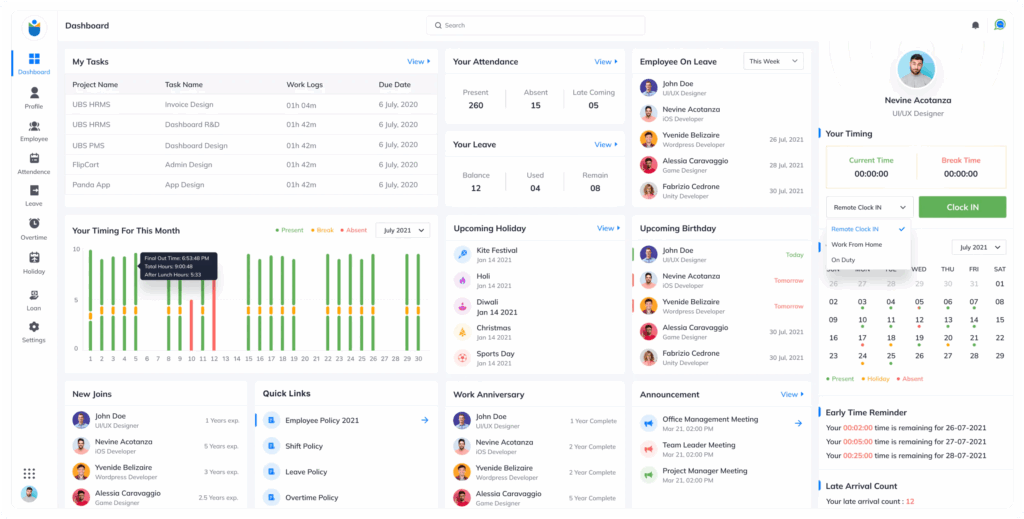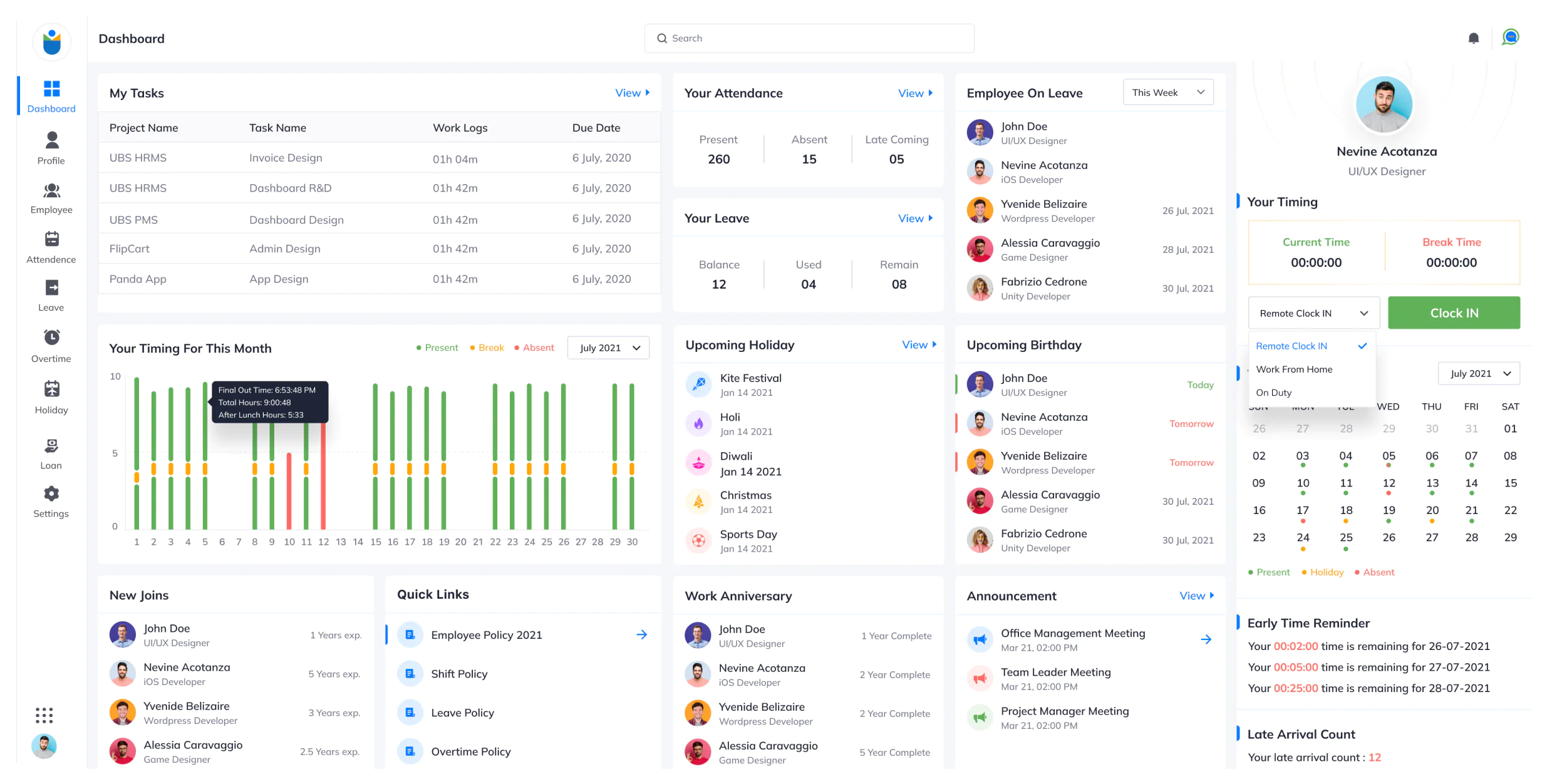
Revolutionize Your Workforce Management with HR Portal Software
In today’s fast-paced business environment, efficient workforce management is no longer a luxury but a necessity. HR portal software has emerged as a game-changer, transforming how organizations handle their human resources functions. This comprehensive guide explores the multifaceted benefits of implementing an HR portal software, its key features, and how it can streamline your HR processes, enhance employee engagement, and ultimately drive business growth.
Understanding HR Portal Software
HR portal software is a centralized, web-based platform that provides employees and HR professionals with self-service access to HR-related information and tools. It acts as a single point of contact for all HR needs, eliminating the need for manual processes, paperwork, and endless email exchanges. By automating routine tasks and providing employees with easy access to information, HR portal software frees up HR staff to focus on more strategic initiatives.
Key Features of HR Portal Software
- Employee Self-Service: Allows employees to access and update their personal information, view pay stubs, request time off, and enroll in benefits programs without HR intervention.
- Document Management: Provides a secure repository for storing and managing employee documents, such as performance reviews, contracts, and training certificates.
- Benefits Administration: Simplifies the enrollment and management of employee benefits, ensuring compliance and reducing administrative burden.
- Time and Attendance Tracking: Automates time tracking, leave requests, and attendance management, improving accuracy and reducing payroll errors.
- Performance Management: Facilitates performance reviews, goal setting, and feedback, fostering employee development and engagement.
- Recruitment and Onboarding: Streamlines the hiring process, from posting job openings to onboarding new hires, ensuring a smooth and efficient experience.
- Reporting and Analytics: Provides valuable insights into workforce trends, enabling data-driven decision-making and improved HR strategies.
Benefits of Implementing HR Portal Software
The implementation of HR portal software offers a plethora of benefits for both employees and employers. Let’s delve into some of the most significant advantages:
Enhanced Employee Experience
An HR portal software empowers employees by providing them with self-service access to information and tools, reducing their reliance on HR staff for routine tasks. This leads to increased employee satisfaction and engagement. Employees can easily manage their personal information, access company policies, and request time off, all within a user-friendly interface. This increased autonomy contributes to a more positive and productive work environment. [See also: Employee Engagement Strategies]
Streamlined HR Processes
HR portal software automates many time-consuming HR tasks, such as payroll processing, benefits administration, and performance management. This automation reduces the administrative burden on HR staff, allowing them to focus on more strategic initiatives, such as talent acquisition, employee development, and organizational culture. By streamlining HR processes, organizations can improve efficiency, reduce costs, and enhance compliance.
Improved Data Accuracy
Manual HR processes are prone to errors, which can lead to inaccurate data and compliance issues. HR portal software eliminates these errors by automating data entry and providing a centralized repository for employee information. This ensures that data is accurate, up-to-date, and readily available for reporting and analysis. Improved data accuracy leads to better decision-making and reduced risk.
Enhanced Compliance
Compliance with labor laws and regulations is crucial for any organization. HR portal software helps organizations stay compliant by providing tools for tracking employee data, managing leave requests, and generating reports. The software can also automate compliance-related tasks, such as sending out required notices and tracking employee training. This reduces the risk of penalties and legal issues. [See also: HR Compliance Checklist]
Cost Savings
While there is an initial investment associated with implementing HR portal software, the long-term cost savings can be significant. By automating HR processes, reducing paperwork, and improving data accuracy, organizations can save time and money. The software can also help reduce costs associated with recruitment, training, and benefits administration. These cost savings can be reinvested in other areas of the business.
Better Communication
HR portal software provides a centralized platform for communicating with employees. HR staff can use the portal to share important announcements, company policies, and training materials. Employees can also use the portal to communicate with HR staff and other employees. This improved communication fosters a more connected and collaborative work environment.
Choosing the Right HR Portal Software
Selecting the right HR portal software is a critical decision that can significantly impact your organization’s HR efficiency and employee experience. Here are some key factors to consider when evaluating different software options:
Identify Your Needs
Before you start researching HR portal software, take the time to identify your organization’s specific needs and requirements. What HR processes do you want to automate? What features are most important to your employees? What is your budget? By answering these questions, you can narrow down your options and find a software solution that meets your unique needs.
Consider the User Interface
The user interface of the HR portal software should be intuitive and easy to use. Employees should be able to easily navigate the portal and find the information they need. A clunky or confusing interface can lead to frustration and decreased adoption. Look for software that offers a clean, modern interface and a user-friendly experience.
Evaluate the Features
Make sure the HR portal software offers the features you need to automate your HR processes and improve the employee experience. Consider features such as employee self-service, document management, benefits administration, time and attendance tracking, performance management, recruitment, and reporting. Choose a software solution that offers the features you need now and in the future.
Check for Integration Capabilities
The HR portal software should integrate seamlessly with your existing HR systems, such as payroll, accounting, and benefits administration. Integration ensures that data is shared between systems, eliminating the need for manual data entry and reducing errors. Look for software that offers open APIs and integrations with popular HR systems.
Read Reviews and Testimonials
Before you make a decision, read reviews and testimonials from other users of the HR portal software. This will give you valuable insights into the software’s strengths and weaknesses. Look for reviews that are specific and detailed, and pay attention to any recurring themes. You can also ask for references from the software vendor and speak directly with current users.
Request a Demo
Most HR portal software vendors offer free demos of their software. Take advantage of these demos to get a firsthand look at the software’s features and functionality. Ask questions and explore the software’s capabilities. This will help you determine if the software is a good fit for your organization.
Implementing HR Portal Software
Once you’ve chosen the right HR portal software, it’s time to implement it. Here are some tips for a successful implementation:
Plan Your Implementation
Develop a detailed implementation plan that outlines the steps involved in implementing the HR portal software. This plan should include timelines, responsibilities, and communication strategies. A well-defined implementation plan will help ensure a smooth and successful implementation.
Communicate with Employees
Communicate with employees about the upcoming implementation of the HR portal software. Explain the benefits of the software and how it will make their jobs easier. Provide training and support to help employees learn how to use the software. Effective communication will help ensure that employees embrace the new software.
Provide Training and Support
Provide comprehensive training and support to employees on how to use the HR portal software. Offer a variety of training options, such as online tutorials, in-person workshops, and one-on-one coaching. Make sure employees have access to ongoing support in case they have questions or encounter problems.
Monitor and Evaluate
Monitor the implementation of the HR portal software and evaluate its effectiveness. Track key metrics, such as employee satisfaction, HR efficiency, and cost savings. Use this data to identify areas for improvement and make adjustments as needed. Continuous monitoring and evaluation will help ensure that the software is delivering the desired results.
The Future of HR Portal Software
HR portal software is constantly evolving to meet the changing needs of organizations and employees. Some of the key trends shaping the future of HR portal software include:
Artificial Intelligence (AI)
AI is being integrated into HR portal software to automate tasks, personalize the employee experience, and provide data-driven insights. For example, AI can be used to screen resumes, answer employee questions, and predict employee turnover.
Mobile-First Design
With the increasing use of mobile devices, HR portal software is being designed with a mobile-first approach. This ensures that employees can access the portal from anywhere, at any time. Mobile-first design also makes the software more user-friendly and accessible.
Cloud-Based Solutions
Cloud-based HR portal software is becoming increasingly popular due to its scalability, flexibility, and cost-effectiveness. Cloud-based solutions also offer better security and reliability.
Focus on Employee Experience
The focus of HR portal software is shifting from simply automating HR processes to enhancing the employee experience. This includes providing personalized content, intuitive interfaces, and mobile access. The goal is to make the HR portal software a valuable resource for employees, not just a tool for HR staff.
Conclusion
HR portal software is a powerful tool that can revolutionize your workforce management. By automating HR processes, enhancing employee engagement, and improving data accuracy, HR portal software can help your organization achieve its business goals. Choosing the right HR portal software and implementing it effectively are crucial for success. By following the tips outlined in this guide, you can ensure that your HR portal software implementation is a success.
Investing in an HR portal software is an investment in your employees and your organization’s future. Embrace the power of technology and transform your HR department into a strategic asset.

